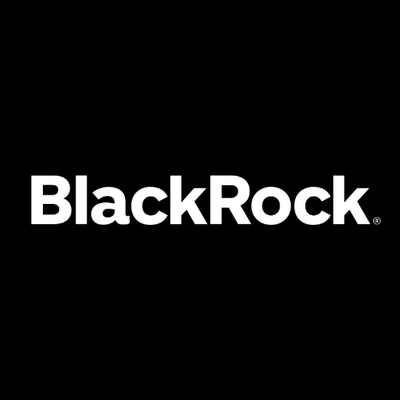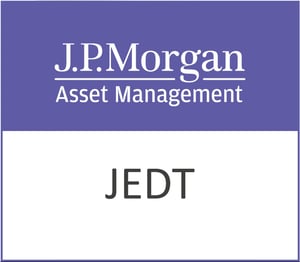BlackRock Income and Growth Investment Trust plc (LON:BRIG) has announced its latest portfolio update.
All information is at 30 November 2022 and unaudited.
For more information on the BlackRock Income and Growth Investment Trust, please visit: www.blackrock.com/uk/brig
Performance at month end with net income reinvested
| One Month | Three Months | One Year | Three Years | Five Years | Since 1 April 2012 | |
| Sterling | ||||||
| Share price | 11.7% | -1.5% | 6.6% | 8.7% | 14.4% | 110.2% |
| Net asset value | 7.5% | 3.8% | 7.0% | 10.7% | 19.1% | 105.3% |
| FTSE All-Share Total Return | 7.1% | 4.0% | 6.5% | 12.2% | 22.8% | 102.1% |
| Source: BlackRock |
BlackRock took over the investment management of the Company with effect from 1 April 2012.
At month end
Sterling:
| Net asset value – capital only: | 201.30p |
| Net asset value – cum income*: | 205.91p |
| Share price: | 191.00p |
| Total assets (including income): | £47.4m |
| Discount to cum-income NAV: | 7.2% |
| Gearing: | 2.9% |
| Net yield**: | 3.8% |
| Ordinary shares in issue***: | 21,076,914 |
| Gearing range (as a % of net assets): | 0-20% |
| Ongoing charges****: | 1.2% |
* Includes net revenue of 4.61 pence per share
** The Company’s yield based on dividends announced in the last 12 months as at the date of the release of this announcement is 3.8% and includes the 2021 final dividend of 4.60p per share declared on 13 January 2022 and paid to shareholders on 17 March 2022, and the 2022 interim dividend of 2.60p per share declared on 22 June 2022 with pay date 1 September 2022.
*** excludes 10,081,532 shares held in treasury.
**** The Company’s ongoing charges are calculated as a percentage of average daily net assets and using management fee and all other operating expenses excluding finance costs, direct transaction costs, custody transaction charges, VAT recovered, taxation and certain non-recurring items for the year ended 31 October 2021.
| Sector Analysis | Total assets (%) |
| Support Services | 12.7 |
| Oil & Gas Producers | 9.4 |
| Pharmaceuticals & Biotechnology | 8.5 |
| Media | 7.5 |
| Mining | 6.6 |
| Household Goods & Home Construction | 6.6 |
| Banks | 6.5 |
| Financial Services | 5.5 |
| General Retailers | 4.1 |
| Personal Goods | 3.7 |
| Tobacco | 3.6 |
| Electronic & Electrical Equipment | 2.7 |
| Travel & Leisure | 2.7 |
| Health Care Equipment & Services | 2.6 |
| Life Insurance | 2.6 |
| Food Producers | 2.5 |
| Nonlife Insurance | 1.6 |
| Gas, Water & Multiutilities | 1.2 |
| Fixed Line Telecommunications | 1.1 |
| Industrial Engineering | 1.1 |
| Real Estate Investment Trusts | 0.8 |
| Leisure Goods | 0.6 |
| Net Current Assets | 5.8 |
| —– | |
| Total | 100.0 |
| ===== | |
| Country Analysis | Percentage |
| United Kingdom | 87.5 |
| United States | 3.3 |
| France | 2.3 |
| Finland | 1.1 |
| Net Current Assets | 5.8 |
| —– | |
| 100.0 | |
| ===== | |
Top 10 holdings | Fund % |
| AstraZeneca | 7.5 |
| Shell | 7.5 |
| RELX | 4.6 |
| Rio Tinto | 4.3 |
| Reckitt Benckiser | 4.2 |
| British American Tobacco | 3.6 |
| 3i Group | 3.3 |
| Unilever | 3.0 |
| Standard Chartered | 3.0 |
| Pearson | 2.9 |
Commenting on the markets, representing the Investment Manager noted:
Performance Overview:
The Company returned 7.5% during the month, outperforming the FTSE All-Share which returned 7.1%.
Global equity markets surged in November and continued their recovery from last month’s lows as markets priced in a soft landing resulting in optimism on the Federal Reserve shifting to ease policy once it reaches the peak of policy rates. Signs of slowing labour demand in the US, and data supporting the view that inflation is close to peaking added to the risk-on mood for markets.
In the US, October CPI showed a 0.3%1 rise in core inflation, below the consensus expectation of 0.5%, with signs of broad-based drop across goods inflation. Meanwhile, long-term U.S. Treasury yields fell, causing the yield curve to invert by the most since the early 1980s.2
In China, protests broke out in the city of Guangzhou in a mass act of defiance against China’s Zero Covid Policy as cases dramatically increased leading to further stay-at-home orders. As a result of the protests, several districts in the region lifted lockdown restrictions, despite increasing cases, which improved risk sentiment.
November proved a busy month for the UK with its largest rate hike since 1989, a government budget, and CPI hitting a 41-year high. The start of the month saw the Bank of England (BoE) raise interest rates by 75bps to 3%, its largest rate hike since 19893 as it warned of “very challenging” times ahead for the UK economy. The BoE forecasted inflation to hit 11%4 by the end of this year and it took less than two weeks for this to come true as CPI hit a 41 year high at 11.1%4 YoY when final October data was published. The main drivers were soaring energy bills and food prices rising at the fastest pace since 1980.
The second half of the month saw finance minister Jeremy Hunt announce a wave of tax increases alongside tighter public spending. The Autumn Statement brought a budget of £55 billion in tax rises and spending cuts from the “mini- budget” announced just 6 weeks prior outlining £30 billion in tax cuts5. The market deemed the new budget sufficient to help stabilize public finance and the pound rallied for the remainder of the month.
Economic data in UK, aside from inflation was relatively mixed but ultimately showed signs of improved economic activity from the recent depressed levels. Yields trended lower and credit spreads tightened as equities rallied. The 10-year gilt bounced back down to 3% after reaching 14-year highs around 4.5% last month.6
The FTSE All Share rose 7.14% during the month with Basic Materials, Utilities and Financials as top performing sectors while Telecommunications underperformed
Stock
The Company outperformed its benchmark during the period. Some easing of Covid restrictions in China saw strength in some holdings with exposure to China including miners BHP and Rio Tinto and Asian bank, Standard Chartered. 3i was another top positive contributor during the month as continued success in the discount retailer across Europe, Action, continued to perform strongly.
RS Group (formerly Electrocomponents) detracted from the performance of the Company during the month. The share price fell after the company announced that the CEO will take a second leave of absence for personal reasons with immediate effect. This development overshadowed a strong set of H1 results which beat expectations. Share prices of RELX and Rentokil fell on dollar weakness and were also top detractors from the active return during the period.
Changes
The Company continues to identify opportunities from the dislocation 2022 has presented, notably, in the consumer space. Whilst we continue to expect a difficult backdrop for the consumer, we recognize that in some cases, both the relative and absolute value on offer are attractive opportunities and we are moving to take advantage of these where we see strong franchises on offer. In November, we added three new midcaps to the portfolio including Games Workshop, Howden Joinery, and Watches of Switzerland following significant share price underperformance due to a weakening consumer backdrop; we believe that these are advantaged franchises which aided by strong balance sheets, cash generation and continued investment, will emerge from this downturn as stronger competitors and with enhanced return prospects.
We also added to WHSmith, Hiscox and Ashmore; funded from reducing positions that performed strongly through the year including AstraZeneca, RELX, and British American Tobacco.
Outlook
As we look ahead into 2023, the headwinds facing global equity markets are evident. Inflation has consistently surprised in its depth and breadth, driven by the resilient demand, supply chain constraints, and most importantly by rising wages in more recent data. Central banks across the developed world continue to unwind ten years of excess liquidity by tightening monetary policy desperate to prevent the entrenchment of higher inflation expectations. Meanwhile, the risk of policy error from central banks or politicians remains high as evidenced by the turmoil created by the ‘mini-budget’ in the UK that sent gilts spiralling. The cost and availability of credit has changed and strengthens our belief in investing in companies with robust balance sheets capable of funding their own growth. The rise in the risk-free or discount rate also challenges valuation frameworks especially for long duration, high growth or highly valued businesses. We are mindful of this and feel it is incredibly important to focus on companies with strong, competitive positions, at attractive valuations that can deliver in this environment.
The political and economic impact of the war in Ukraine has been significant in uniting Europe and its allies, whilst exacerbating the demand/supply imbalance in the oil and soft commodity markets. We are conscious of the impact this has on the cost of energy, and we continue to expect divergent regional monetary approaches with the US being somewhat more insulated from the impact of the conflict, than for example, Europe. Complicating this further, is the continued impact COVID is having on certain parts of the world, notably China, which has used lockdowns to control the spread of the virus impacting economic activity. We also see the potential for longer-term inflationary pressure from decarbonisation and deglobalisation, the latter as geopolitical tensions rise more broadly across the world.
As we enter 2023, we have seen the first signs of demand weakness, notably in areas of consumer spending impacted by rising interest rates such as demand for new housing. We would expect broader demand weakness as we enter 2023 although the ‘scars’ of supply chain disruption are likely to support parts of industrial capex demand as companies seek to enhance the resilience of their supply chains. A notable feature of our conversations with a wide range of corporates has been the ease with which they have been able to pass on cost increases and protect or even expand margins during 2022 as evidenced by US corporate margins reaching 70-year highs. We believe that as demand weakens and as the transitory inflationary pressures start to fade during 2023 (e.g. commodity prices, supply chain disruption) then pricing conversations will become more challenging despite pressure from wage inflation which may prove more persistent. While this does not bode well for margins in aggregate, we believe that 2023 will see greater differentiation as corporates’ pricing power will come under intense scrutiny.
The UK’s policy has somewhat diverged from the G7 in fiscal policy terms as the present government attempts to create stability after the severe reaction from the “mini-budget”. The early signs of stability are welcome as financial market liquidity has increased and the outlook, whilst challenged, has improved. Although the UK stock market retains a majority of internationally weighted revenues, the domestic facing companies have continued to be impacted by this backdrop, notably financials, housebuilders and property companies. The valuation of the UK market remains highly supportive as currency weakness supports international earnings, whilst domestic earners are in many cases at COVID or Brexit lows in share price or valuation terms. Although we anticipate further volatility ahead as earnings estimates moderate, we know that in the course of time, risk appetites will return and opportunities are emerging.
We continue to focus the portfolio on cash generative businesses with durable, competitive advantages boasting strong leadership as we believe these companies are best-placed to drive returns over the long-term. We anticipate economic and market volatility will persist in 2023 and we are excited by the opportunities this will like create by identifying those companies using this cycle to strengthen their long-term prospects as well as attractive turnarounds situations.
1Source: Financial Times, November 2022 link:
https://www.ft.com/content/1d93c771-ee91-40a6-a878-be120d59f43c
2Source: Forbes, November 2022 link:
https://www.forbes.com/sites/simonmoore/2022/12/08/yield-curve-inverts-to-depths-not-seen-since-1980s-raising-recession-fears/
3Source: Financial Times, November 2022 link:
https://www.ft.com/content/7ee4ebdf-ac70-4c9f-84e7-1341ade60bc0
4Source: Financial Times, November 2022 link:
https://www.ft.com/content/1fcc250c-c1c5-4820-a5f4-4e48662a73aa
5Source: Financial Times, November 2022, link:
https://www.ft.com/content/5daeca83-dc55-4371-bfe3-b20140cf1fe1
6 Source: Financial Times Market Data November 2022
For more information on the BlackRock Income and Growth Investment Trust, please visit: www.blackrock.com/uk/brig







































